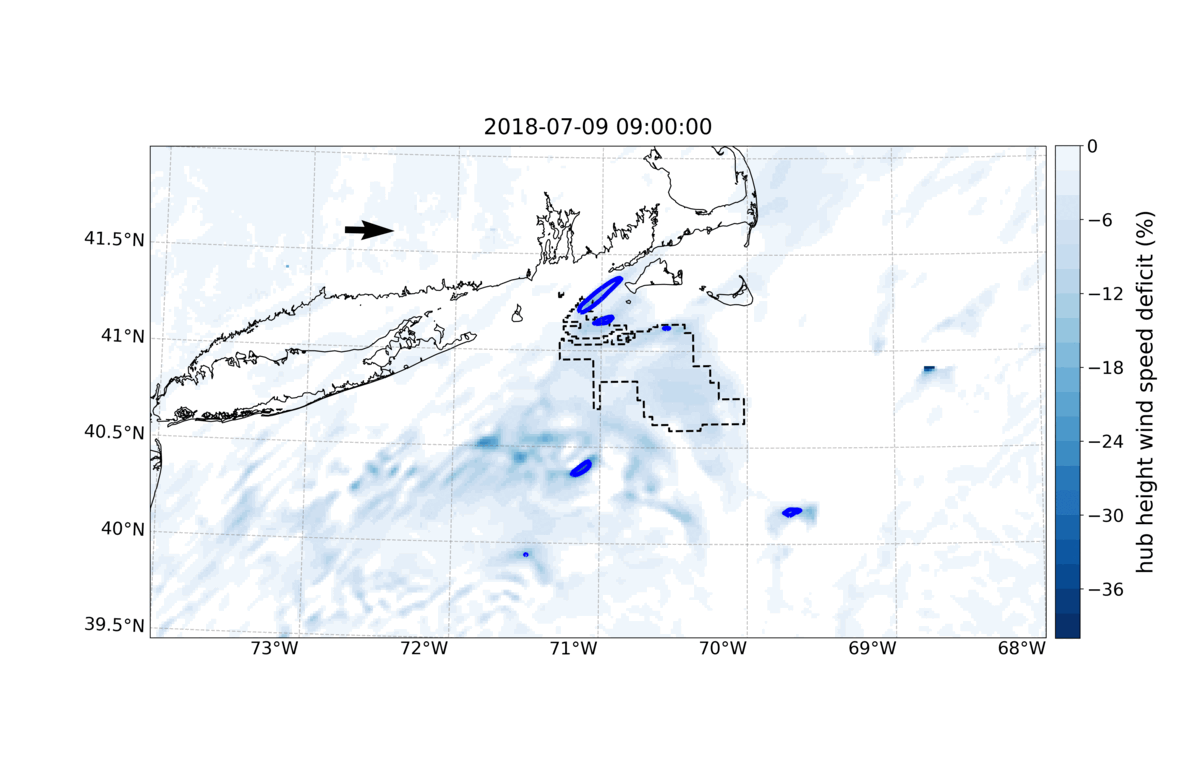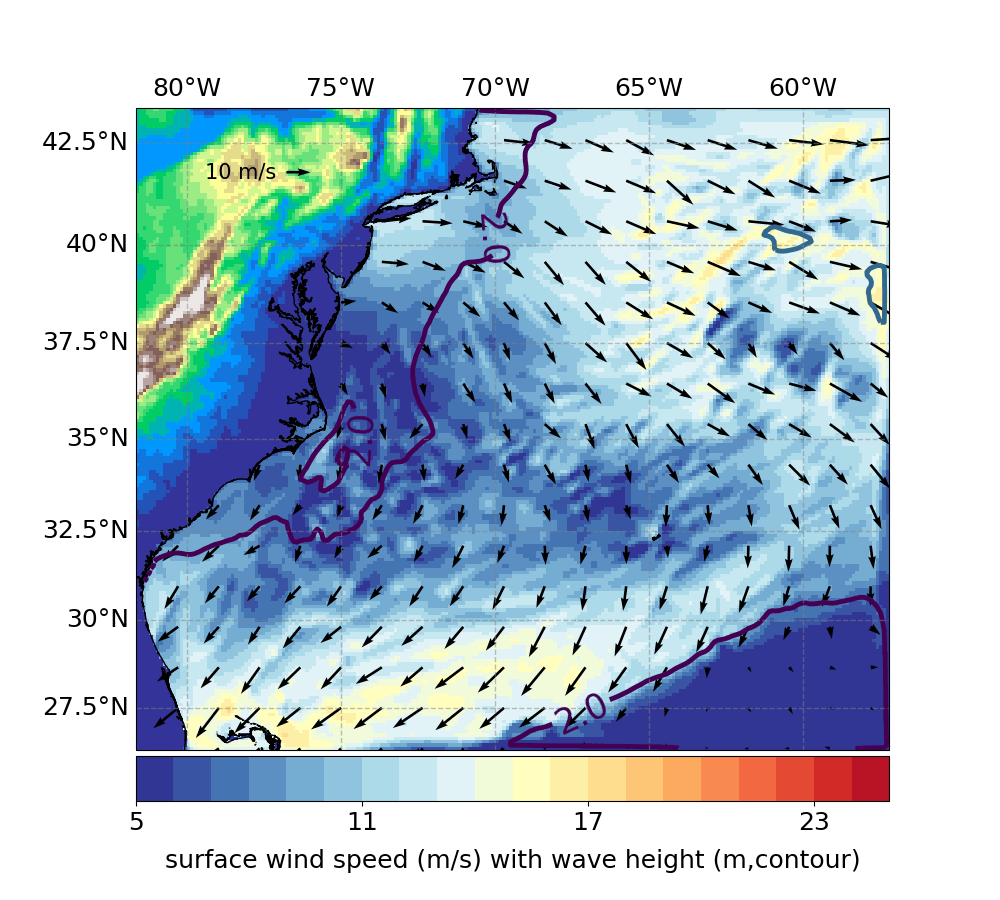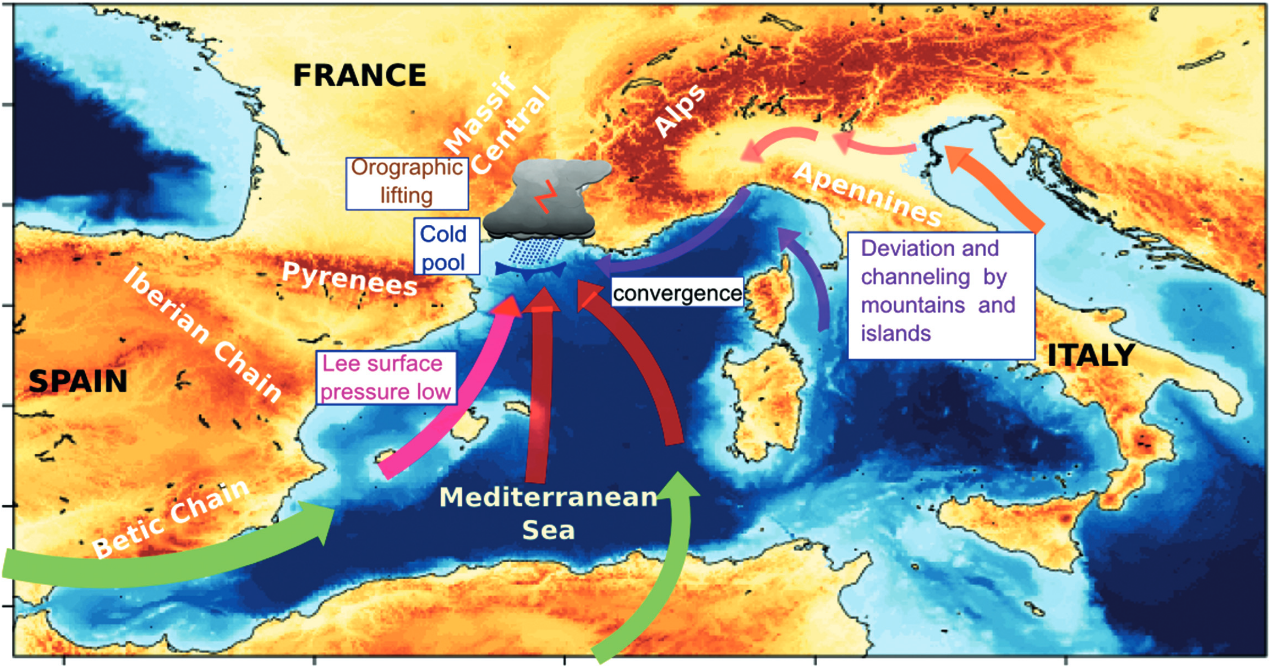Modified COARE3.5 sea surface parameterization
The modified version of the bulk fluxes parameterization COARE3.5 (Sauvage et al. 2023) is available on GitHub: modified_COARE3.5.
Based on the original COARE3.5 (Edson et al. 2013), this version includes additional wave-based formulations using the angle between wind and waves or mean sea state conditions instead of peak sea state conditions.
Research Topics

Improving high resolution offshore wind resource assessment in the MA/RI lease areas
The 3rd Wind Forecast Improvement Project (WFIP3), sponsored by the U.S. Department of Energy, seeks to improve our understanding of the physics of the atmosphere and ocean that dictate the structure and variability of the wind resource within the Marine Atmospheric Boundary Layer (MABL). Part of my contribution to this project will be on improving the physical understanding of mesoscale meteorological and oceanographic processes that directly affect wind resource characterization in the U.S. East Coast offshore environment.

Wind-waves coupling response during atmospheric cold fronts
Atmospheric cold fronts have elongated along-frontal scales of many 1000s km, but much shorter cross-frontal scales of only 10-100s km. They are accompanied by gale-force surface winds (15-30 m/s) and mark abrupt shifts in the direction between the pre-frontal and post-frontal winds. At the sea surface, the strong winds generate short-length scale coupled wind-waves of 0.1-10s cm, while the veering of the wind leads to a large area of growing wind-waves that become misaligned with local winds due to the rapid translation of the fronts.

Improving coupled Ocean-Atmosphere processes during extratropical cyclones in the northeastern U.S.
This project will develop a better understanding of the physical processes governing the structure and evolution of the marine atmospheric boundary layer (MABL) in the Northeastern US and the New England shelf regions. Capitalizing on the detailed in situ and remotely sensed observations of coupled boundary layer variables and air-sea fluxes uniquely available in the region, this project will validate and improve the MABL processes in the NASA’s Unified WRF (NU-WRF) modeling system to better represent and forecast extreme coastal storms. By including the full coupling of the regional ocean modeling system (ROMS) and the WaveWatchIII (WW3) to the NU-WRF to exploit the critical wave-ocean coupling effect on the atmosphere, the project will also enable, for the first time, NU-WRF-based coupled hindcast and forecast capabilities of extreme weather events with reduced uncertainty.

Mixed Sea conditions in the Northwestern Tropical Atlantic
In winter, the Northwest Tropical Atlantic Ocean can be characterized by various wave age-based interactions among ocean current, surface wind and surface waves, which are critical for accurately describing surface wind stress. In this work, coupled wave-ocean-atmosphere model simulations are conducted using two different wave roughness parameterizations within COARE3.5, including one that relies solely on wind speed and another that uses wave age and wave slope as inputs.

Mediterranean Heavy Precipitation Event
The western Mediterranean region is regularly affected by heavy precipitation events that are characterized by a large amount of rainfall over a small area in a very short time; these events can lead to flash flooding, causing severe damage and, in some cases, casualties. Mediterranean HPEs are known to be violent events and are quite often associated with strong wind conditions and, thus, a very rough sea state. The studied event is characterized by a very strong (>20 m s−1) easterly to south-easterly wind at low level that generated very rough seas (significant wave height of up to 6 m) along the French Riviera and the Gulf of Lion.